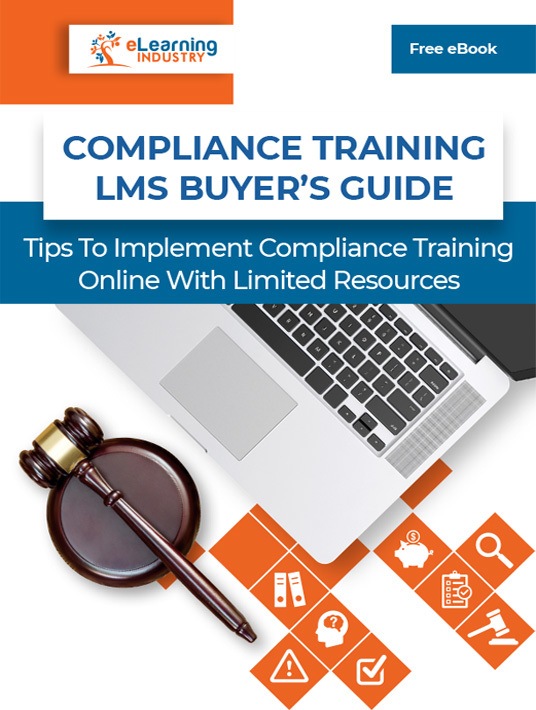Essential Features Of A Complete Corporate Compliance Training Platform
The term ‘compliance’ only ever seems to be used as a threat. The emphasis is on what happens when you don’t comply. Penalties, fines, punishments, license revocation. We forget compliance is for our own good. The initial goal is to prevent property damage and bodily harm while maintaining high-quality standards. With that in mind, and with monetary consequences as an afterthought, what crucial elements should your corporate compliance training platform possess? Here are 7 essentials to add to your compliance training software shopping list.

1. Listings And Summaries
When was the last time you used Wikipedia? Like many websites, it now has a light-box feature where you can hover for a summary and click-through for detail. Corporate compliance training platforms should have the same. You may have to memorize regulations as written, but you also need summaries and ‘translations’. The latter breaks it down from legalese to everyday language. A good platform lets employee training participants easily toggle between the 3 content formats, depending on their needs. You should also have the ability to catalog your resources in one centralized location so that employees can quickly address challenges.
2. Customizable Reporting
Writing briefs is one of the dullest parts of any job. It’s probably a task we wouldn’t mind the robots taking over. Automated reporting tools are a useful way to monitor and implement training. You can plug in relevant bits of data and generate detailed reports. Areas of interest may include study times, completion rates, or score sheets on particular assessment exercises. In the reference section, you can tabulate which topics draw the most interest. Or which documents are the most popular. This can inform your content strategy. Another customizable compliance training LMS reporting feature to look for is scheduling. Which gives your team the ability to personalize when and how they receive reports that are relevant to their goals. For example, your customer service supervisor is emailed their subordinate’s reports every week so they can provide support.
3. Mobile Responsive
Statistics suggest a little more than half the world’s online population access the net via mobile. The percentage is probably higher for compliance training. Staff is busy with work all day, so their training sessions are probably done after hours. Or when they're on-the-job and need to address gaps right away. Meaning whatever online training platform you select, it needs to be mobile responsive. This is more than just shrinking the screen. Content layouts, text volumes, and visual formats have to be compressed for mobile. Even something as simple as buttons, and rich links need to reflexively adapt to smartphone screens.
4. Social Learning Integration
People worry the digital age has eroded reading habits. In reality, though, the number of tweets, blogs, and social media posts we consume each day could fill several novels. And the creativity that goes into viral media is astounding. In short, social media can be a good learning tool and isn’t as ‘low brow’ as we assume. Plus, you’re a lot more likely to open a text than a memo, so apply it in your training. Invest in a new compliance training LMS with social learning support so that you can spark peer-based support networks.
5. Collaborative Tools Built-In
Group assignments can be a valid model in corporate compliance training platforms. Each learner can bring a different departmental perspective to the issue. And explaining regulations to colleagues helps both the explainer and their peers to comprehend better. Look for a platform that makes it easier to collaborate online. These may include chat rooms, authoring collectives, web-conferencing tools, and multi-player co-operative training simulations. Think of the latter as virtual team-building exercises. Except they’re more practical and contextual than fire-walks and trust-falls. These serious group games are mundane, task-based, and work-oriented.
6. Multimedia Support
While a lot of us can read and write, many ‘prefer the movie version’. Others opt for audiobooks and podcasts. It goes beyond entertainment and dips into our chosen mode of knowledge absorption. Some people remember more of what they watch than what they read. As such, they’d rather view a how-to video than read a 3-step article. Auditory learners respond best to voice inflections and nuanced background sound. Your corporate compliance training platform should possess all these tools. It needs the capacity to create, store and present content in all these formats. This allows employee training participants to select the mode they like best.
7. Certifications
Certification management holds everyone accountable and allows you to monitor individual progress. Employees who don’t earn their certificates in time can receive follow-up support to bridge the gap. You also have proof that they completed the necessary training if you are audited. Another perk of investing in a compliance training LMS with certifications is motivation. Employees are more likely to train if they have something to show for it. Even if that is a printable certificate or one they can share on their social media profile to display their know-how.
Ensuring your company becomes and remains compliant is largely a function of your online training program. When you opt for new corporate compliance training software, what are the features you can’t do without? Verbatim lists, translations, interpretations, and summaries of the compliance regulations themselves. Automated reporting templates and mobile responsiveness. Social media linking, collaborative features, and smooth multimedia playback. As well as certification management for accountability and tracking. With all these tools in place, your staff has a better chance of engaging lessons and avoiding non-compliance penalties.
Have you ever wondered what compliance training is and how you can implement a compliance training LMS in your workplace without going over your budget? Download our eBook Compliance Training LMS Buyer's Guide: Tips To Implement Compliance Training Online With Limited Resources and discover how to cut costs, mitigate risks, train your employees, monitor their performance, and maintain your company’s high standards.







